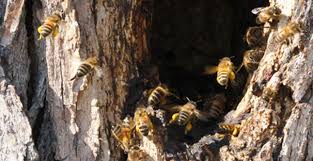
Manuka Honey Sweetened Condensed Coconut Milk + Three Delectable Ways to Use it This Holiday Season
We might have buried the lede on this one. Not that we meant to, of course. For the record, we would never purposefully make such a delicious creation so hard to find.
Remember when we made that Dairy-Free Boba Recipe that tastes like store-bought boba? We couldn’t have made it without one key component - dairy-free sweetened condensed milk or, as some might say, “mylk.”
Your standard sweetened condensed milk contains over 160 grams of refined sugar per cup, making it both amazingly delicious & definitely not for regular consumption. Plus, an estimated 70% of people are lactose intolerant, so it’s important to find options everyone can enjoy - especially around the holidays!
Since honey contains more fructose than glucose, it is naturally sweeter tasting. This means you can use less honey than sugar in your recipes to achieve the same level of sweetness. We typically swap one cup of sugar for ½ a cup of honey.
What makes it even better is the addition of Manuka honey! Manuka honey is unique because it’s the only honey in the world containing high levels of Methylglyoxal, aka MGO. MGO is the main medicinal component and makes Manuka a powerhouse of antibacterial, antimicrobial, and anti-inflammatory benefits.
Since MGO is not killed off by heat, it’s a great way to sneak some health benefits into your desserts. Not only will no one complain, but they might even appreciate the deeper, more complex flavor that comes from using this fantastic sugar alternative.
Now, back to the tasty stuff! Read on to learn how to make an upgraded, dairy-free version of Sweetened Condensed Milk AND three new, delectable, effortless recipes you can create using it! Scroll down, or click below to view each one:
1-Base Sweetened Condensed Coconut Milk

Ingredients:
- One can of full-fat coconut milk
- ¼ cup PRI Manuka Honey 100+
Instructions:
- Shake your coconut milk. It should be liquid and not solidified. It should take about 5 minutes. Stir often to prevent the milk from burning.
- Once it starts to bubble to the top, reduce the heat to a low simmer.
- Pour in the Manuka honey while whisking continuously. Once the honey is well incorporated, ensure the flame is on low and set a timer for 10 minutes.
- When the timer goes off, check the mixture and give it a good whisk. It should start to have a golden color on top. Let it cook for another 10 minutes.
- It should look like it will caramelize at the 20-25 minute mark. The key here is to remove it once the milk has reduced, but it doesn’t turn to caramel. You must use your best judgment and keep your eye on the stove at the 20-minute mark.
- Remove from the stove and carefully pour the condensed milk into a glass jar with a lid. Use an oven mitt, and be careful, as the glass will be scorching. Close the jar and let it sit on the counter to cool, then place it in the fridge to thicken.
- Use in coffee, pastries, desserts, and more!

Ingredients:
- Sweetened Condensed Coconut Milk
- ½ teaspoon PRI microplastic-free sea salt
- ½ teaspoon of vanilla (Optional)
Instructions:
- To make the caramel sauce, bring the Sweetened Condensed Coconut Milk to a boil and then reduce it to a low simmer. If using the optional ingredients, also add those now. Stir often to prevent it from burning on the bottom. Depending on your stove, it should take about 15-25 minutes. If you’re making the condensed milk to make the caramel sauce, keep the condensed milk on the stove for an extra 20-25 minutes on a low simmer until reduced, and you have a thick golden brown caramel.
- Use an oven mitt, and be careful, as the glass will be extremely hot. Top the lid and let it sit on the counter to cool, then place it in the fridge. Use in dessert, ice cream, coffee, rice cakes, and more!

Serves: 2-3
Ingredients:
- 2 cups milk of choice (we used oat)
- ½ cup Manuka-sweetened condensed coconut milk
- ⅓ cup chocolate chips
- 1 tsp vanilla
- Toppings: mini marshmallows, whipped cream, cinnamon
Instructions:
- In a saucepan, pour in milk, Manuka-sweetened condensed coconut milk, chocolate chips, and vanilla.
- Bring to a boil on medium-high heat. Stir often to help the melted chocolate incorporate into the milk. Reduce to a simmer.
- To get an extra frothy and well-mixed hot cocoa, carefully use a milk frother in the saucepan or immersion blender.
- Transfer the hot cocoa to a mug and top with mini marshmallows, whipped cream, and cinnamon dusting.

Ingredients:
- 7 oz Manuka sweetened condensed coconut milk
- 3/4 cup cacao powder or cocoa powder (plus more for rolling/dusting)
Instructions:
- In a saucepan, bring sweetened condensed coconut milk to a slight boil.
- Once boiling, remove from heat, sift in 1/4 cup of cocoa powder, and gently stir until well combined.
- Once combined, pour in another 1/4 of a cup of cacao powder, and continue to stir.
- Add 1 tbsp at a time of the remaining ¼ cup of cacao until you achieve your desired consistency. The batter should be thick but not too dry. Once you have a fudgy dough, place the dough in plastic wrap and freeze until solidified, at least 30 minutes. Then roll into balls and dust or roll in extra cacao powder. Store in the freezer and enjoy fudgy goodness!






 We’ve discussed the many ways that propolis is good for us and our families but we haven’t looked at why bees collect propolis in the first place. Propolis a plant based resin is used to give a hive structure and to protect it against predators, microbes and pathogens. Bees collect propolis and distribute it throughout their hives. Propolis protects the hive from pathogens through its natural antimicrobial and antifungal properties. Without it bees would be subject to environmental stressors that could lead to their death. When building the hive they not only use the propolis in the architecture but they also create a propolis envelope, which surrounds the hive. This envelope acts as a antimicrobial layer for the hive. When building nests in the hollow of a tree for example the bees first layer the cavity with a layer of propolis that are ranges from 0.3-0.5mm thick.
We’ve discussed the many ways that propolis is good for us and our families but we haven’t looked at why bees collect propolis in the first place. Propolis a plant based resin is used to give a hive structure and to protect it against predators, microbes and pathogens. Bees collect propolis and distribute it throughout their hives. Propolis protects the hive from pathogens through its natural antimicrobial and antifungal properties. Without it bees would be subject to environmental stressors that could lead to their death. When building the hive they not only use the propolis in the architecture but they also create a propolis envelope, which surrounds the hive. This envelope acts as a antimicrobial layer for the hive. When building nests in the hollow of a tree for example the bees first layer the cavity with a layer of propolis that are ranges from 0.3-0.5mm thick.





 Water although removed from nectar to make honey is important for the growth and maturation of new larvae. Water collected is transferred to the waiting in-hive workers (nurse bees) through the process of trophallaxis. The nurse bees then combined it with high amounts of pollen and nectar to produce the jelly in their hypopharyngeal glands which is used to feed the larvae. The collected water is also used to keep the hive cool. The water is spread in a thin film atop sealed brood or on the rims of cells containing larvae and eggs. The in-hive workers then fan vigorously, setting up air currents which evaporate the water and cool the interior of the hive on hot summer days.
Water although removed from nectar to make honey is important for the growth and maturation of new larvae. Water collected is transferred to the waiting in-hive workers (nurse bees) through the process of trophallaxis. The nurse bees then combined it with high amounts of pollen and nectar to produce the jelly in their hypopharyngeal glands which is used to feed the larvae. The collected water is also used to keep the hive cool. The water is spread in a thin film atop sealed brood or on the rims of cells containing larvae and eggs. The in-hive workers then fan vigorously, setting up air currents which evaporate the water and cool the interior of the hive on hot summer days. Although the collector bees pay an important role in the maintenance and survival of the hive lets not for get about the bees stationed as guards. Guard bees protect the hive, stinging intruders and emitting a pheromone to warn bees inside the hive of impending danger.The guard bees stand at the hive entrance on their back four legs with their front legs raised. They inspect every bee entering the hive. The guard bees can determine if a bee belongs to its colony by the bee’s odor and only members of the hive are allowed in.The guard bees will sting and remove foreign intruders, such as bumble bees, wasps, and yellow jackets. They will also sting and attempt to drive away intruding skunks, raccoons, and beekeepers to keep the hive safe.
Although the collector bees pay an important role in the maintenance and survival of the hive lets not for get about the bees stationed as guards. Guard bees protect the hive, stinging intruders and emitting a pheromone to warn bees inside the hive of impending danger.The guard bees stand at the hive entrance on their back four legs with their front legs raised. They inspect every bee entering the hive. The guard bees can determine if a bee belongs to its colony by the bee’s odor and only members of the hive are allowed in.The guard bees will sting and remove foreign intruders, such as bumble bees, wasps, and yellow jackets. They will also sting and attempt to drive away intruding skunks, raccoons, and beekeepers to keep the hive safe.
